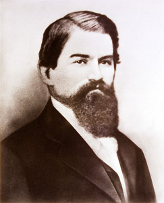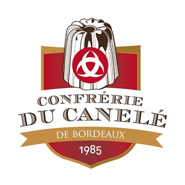Grâce à Bordeaux: Cocaine, Canalé & Lamprey
Vin Tonique Mariani
Anyone who likes an apéro with a kick in it would have loved “Vin Tonique Mariani”. It was marketed in the nineteenth century by Angelo Mariani, a French chemist from Corsica. The main ingredients were cocaine and Bordeaux wine. It was advertised as a tonic to restore health, strength, energy, appetite, mood, and vitality.
The advertising worked—as did, one assumes—the cocaine in the tonique, because it convinced members of several royal families, artists, writers, politicians and numerous other notables to endorse it.
These household names included a cast of thousands.
Amongst them were, Emile Zola, Alexandre Dumas, Jules Verne, Ulysses Grant, Sarah Bernhardt, six Presidents of France, and, wait for it, Queen Victoria, her royal self. The tonique even had Vatican support. Popes Leo XIII, Benedict XV and Pius X all thought it so good that they each awarded Mr Mariani or his product a gold medal.
Pope Leo even appeared in an advertisement supporting the concoction. He claimed that he used the tonique to “fortify himself when prayer was insufficient.” High praise indeed. And, some would say, tantamount to a divine tick of approval.

It so impressed American chemist John Pembleton, that he went on to market a Pemberton’s French Wine Coca, which claimed to be “a most wonderful invigorator of sexual organs.” But, alas, because of temperance legislation, the alcohol was eventually removed from the product. It then became known simply as ‘Coca Cola.’
Sea lamprey recipe
An hour or so west of Bordeaux you’ll find, Saint-Terre, the self-proclaimed world capital of the sea lamprey. “
Sea lamprey? What the hell’s that? – you may well ask?
Well, it’s a regional delicacy. In fact, it’s an eel that goes back 450 million years. But no worries about freshness because between December and May they’re caught in the Dordogne and Garonne rivers and the Gironde estuary.
This esoteric delicacy is only available in a few gourmet restaurants in the region, so for the more daring home chefs, here’s the recipe if you’d like to try cooking lamprey yourself.
Are you ready?
- Bleed the eel by hanging it up by its mouth.
- Cut off the tail and collect the draining blood.
- Mix this with a red Bordeaux—some connoisseurs add Armagnac.
- The lamprey is then flambéed in the jus.
- The result is (or should be) a dish in a sauce with delightfully strong and perfumed flavours.
It is traditionally served with garlic bread croutons. Don’t forget the obligatory glass of red Bordeaux.
(Disclaimer: Call me a wimp if you like, but the author has not had the courage to try out this recipe. Nor, by the way, has he ever tried to cook jugged hare, where the sauce is thickened with the blood and liver of the animal, puréed with heavy cream. Pretty scary stuff hey?)
Confrérie du Canelé de Bordeaux
But back to Bordeaux city, because there’s another mouthwatering delicacy to describe. The Bordeaux canelé. (Read on to find out why this is not a spelling error.)
One tradition holds that the original recipe was developed in a convent before the Revolution. Local Bordeaux winemakers used egg whites to clarify their wines. The yolks were given to the nuns in a local convent who used them to make small cakes in a distinctively shaped mold.

Good canelés are very, very difficult to bake.
The best have a dark brown, to black, crisp, chewy crust.
Bite into one and release a fragrant thick creamy caramel texture and flavour, usually with a subtle bitterness.
Some gourmet pâtissieres add their own individual touches. Armagnac, chocolate ganache, lime, lavender, bitter orange, honey, ginger, rum, vanilla and cardamon are just a few. Yum, yum. Simply wonderful!
The canelé soon became extremely popular all over France. But this irritated the Bordeaux canauliers who had a vested interest in protecting their industry. In an attempt to distinguish the local version from the millions of countrywide imitations, a group of Bordeaux pâtissieres formed a brotherhood, the Confrérie du Canelé de Bordeaux.
In a further attempt to make it unique, they even changed the spelling of their product.
The delicacies became officially known as canelés, with one ’n’ dropped from the widely used noun ‘cannelé’. This version was then registered with the Institut national de la propriété industrielle, the body in charge of the protection of intellectual property in France. A striking example of how seriously the French take their food.
This article could go on forever, but the editor won’t allow that, so these three examples of the kind of hidden delights you might stumble across in Bordeaux and surrounds will have to do.
Therefore that’s all folks, but you can read my other article on Bordeaux here.
Have you been to Bordeaux? Have you tried any of these delicacies? Share your experiences with us in the comments below.
Image credits:
1. John Stith Pemberton via wikipedia
2. Lamprey via wikipedia
3. Estuaire de la Gironde via wikipedia
4. Gateaux bordelais via Facebook








